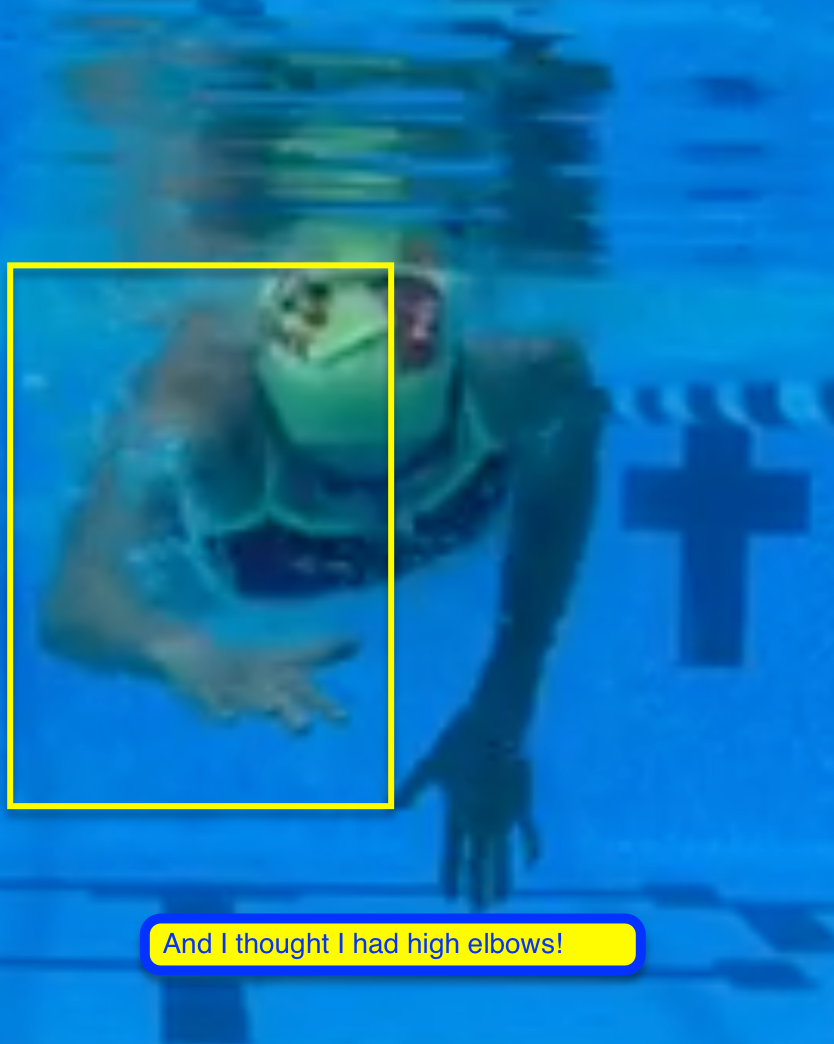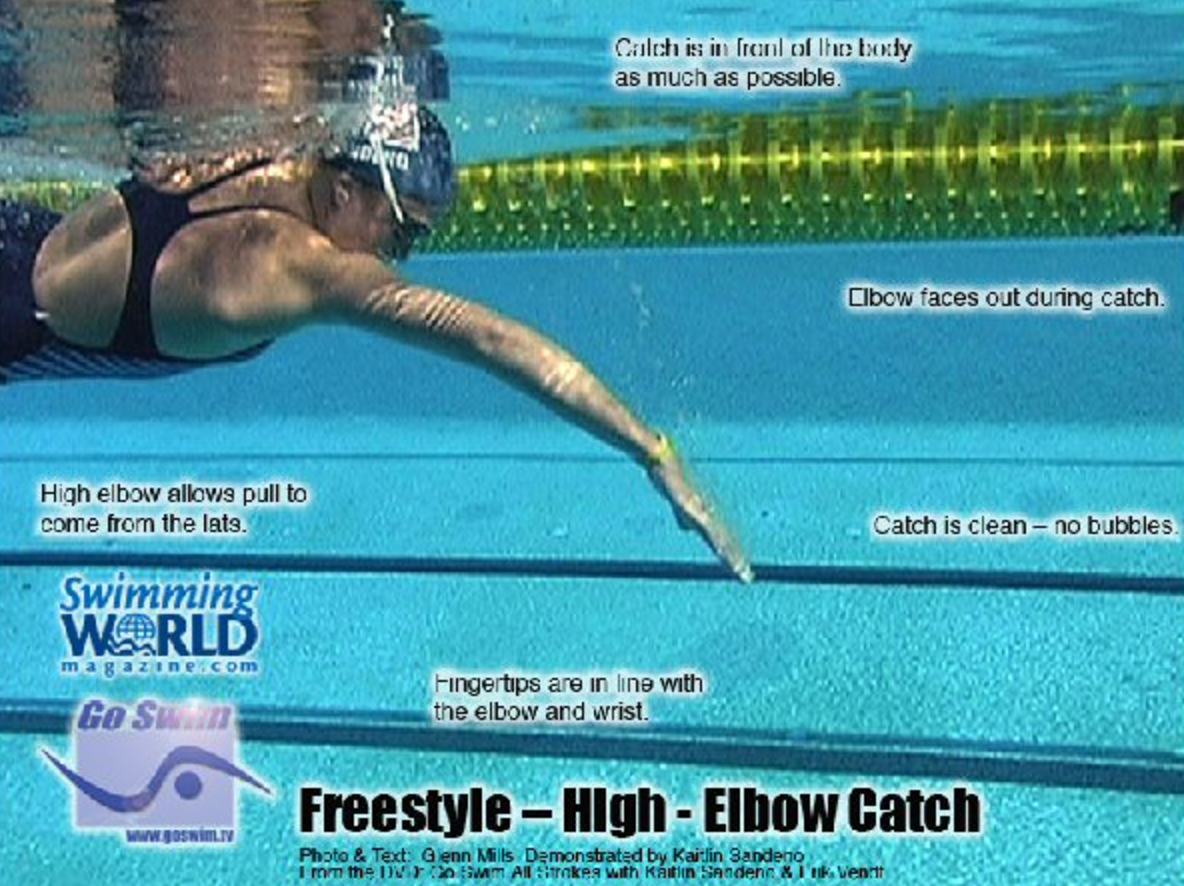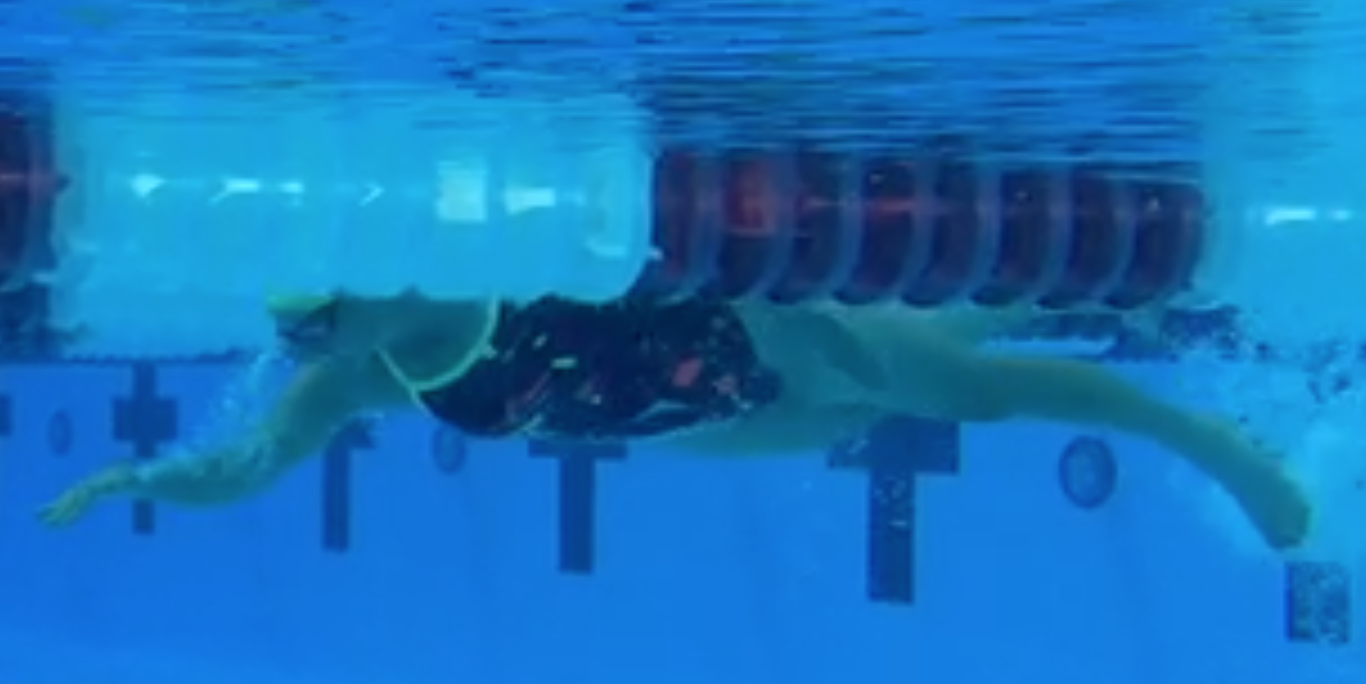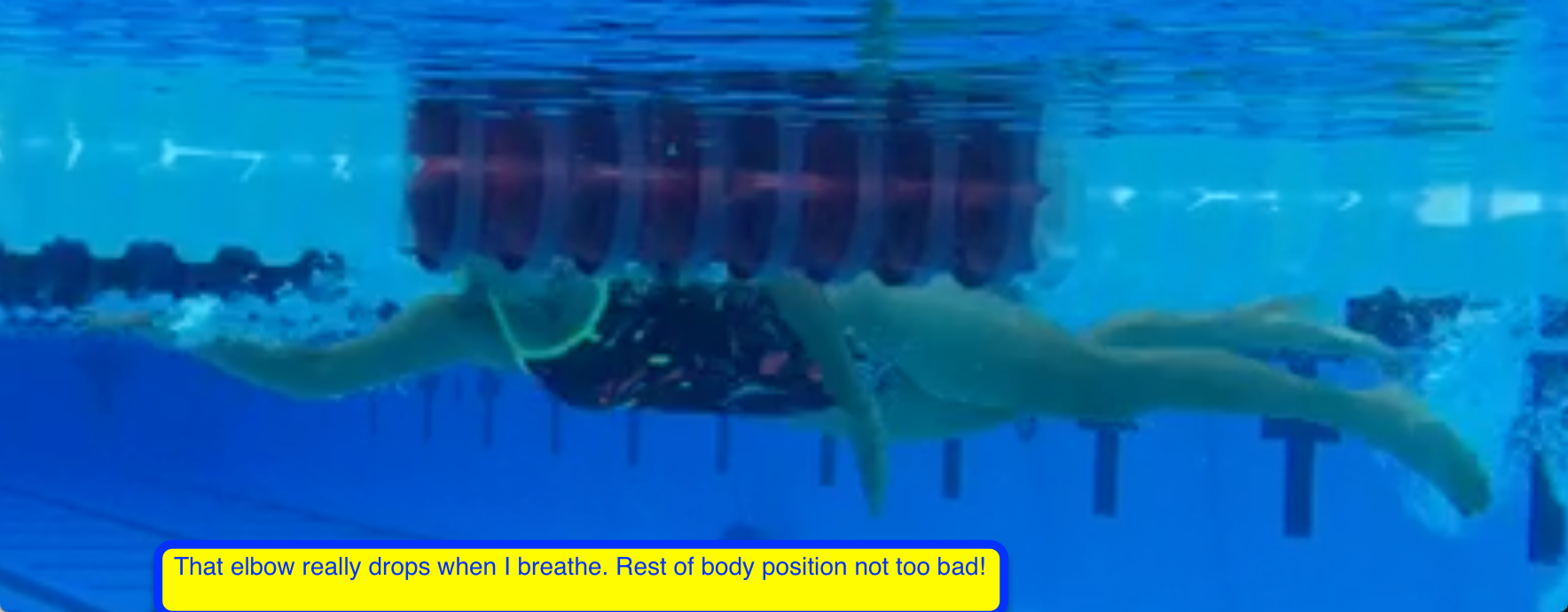Y’all. I fancy myself a decent swimmer. Ok…an adequate swimmer…I’m an adult triathlete who wasn’t a trained youth swimmer. Getting around buoys and making the cutoff time officially makes me “adequate,” right? I’ve been doing triathlons since (gulp) 2002 and back in the day, it was common for me to come out of the water dead last or darn near it. I remember vividly thinking, “Oh, what I wouldn’t give to be a mid-pack swimmer someday!” Well, it’s been many years and I’m proud to say that I’ve firmly planted myself right there in the mid-pack spin cycle of the mass swim washing machine. Victory! Sort of…As my mid-packers know, that boxing match in the water is also mentally and physically exhausting.
Thanks to the coaches and Masters swim classes at Austin Aquatics and Sports Academy, I’ve seen some steady improvement this season in form, endurance and times. Now, let’s be honest, I’m still hanging out down there in lane 18, but my 1:55 times crept down to 1:50s, then 1:45s and then…stall…poopers. Truth be told, I take full responsibility. I haven’t been consistent with attending Masters. As Ironman training hours have crept up, my swim hours have been focused more on endurance and open water wetsuit training. I’m no longer hanging out at the training center 24-hours-a-day and have, instead, spent more time in Barton Springs just getting used to that open water mindset. I’m not saying it’s the right thing to do. It’s just my approach at this particular time. Ironman racing, to me, is a rhythm and we all have to find our own beat. My mind needed a break and I’ve found a little solace and peace in some of these longer open water swims. What I haven’t found is much more speed.
I’m getting ready to leave town for a few weeks before Ironman, so last week I scheduled a private swim session with Coach Missy just to see what’s actually happening under the water. Why did I hit a plateau in my training? What does my stroke actually look like and are there a few glaring tweaks that can be made (or at least planted in my peabrain) prior to the big race? If nothing else, I’ll know what to work on when I return for some off-season improvements.
Let me tell you. Watching a video of yourself swimming is like accidentally hitting the “selfie” mode on your camera. You’re never fully prepared for the horror that’s staring back at you. In my 30 minute lesson, I swam no more than a 200. That’s it. Just 5 minutes of swimming followed by 25 minutes of coaching, video assessment and drill advice. Best 30 minute coaching session ever.
In my brain, my stroke was perfect. I’ve got the perfect recovery and high elbow entry. As Donald Trump would say, “WRONG.”
 The biggest thing we noticed consistently is that my elbow drops pretty much every time my hand enters the water. Lots of potential reasons for that, but one of the biggest is lack of shoulder flexibility. I’m also not engaging my lat muscles (if I even have any). This doesn’t make me a freak. It actually makes me pretty typical and it explains why my left elbow would sometimes hurt after a long practice. A dropped elbow is a common issue among swimmers who never properly learned “the catch” as a young trained swimmer. It’s clearly still as elusive as a unicorn to me as an adult.
The biggest thing we noticed consistently is that my elbow drops pretty much every time my hand enters the water. Lots of potential reasons for that, but one of the biggest is lack of shoulder flexibility. I’m also not engaging my lat muscles (if I even have any). This doesn’t make me a freak. It actually makes me pretty typical and it explains why my left elbow would sometimes hurt after a long practice. A dropped elbow is a common issue among swimmers who never properly learned “the catch” as a young trained swimmer. It’s clearly still as elusive as a unicorn to me as an adult.
As Missy said in her email follow up: “The primary goal is to get your upper arm closer to the surface of the water during the catch. The angle of your arm entering the water too. Improving flexibility in your shoulder will be a good start.” Uh yeah. That’s an understatement. My streamline position looks like an obtuse triangle.
Compare my arm position with the image of this portrait of ideal form. (there’s always “that girl.”) You’ll notice her wrist is well below her elbow. This is what I thought I looked like in the water. Pictures say a thousand words and in my case, they seem to be repeating, “Dropped elbow, dropped elbow, dropped elbow.”

Here’s the good news: For the most part, my body position is aligned well and my head position is decent (except for that breathing part). Once I eventually get the catch, my pull isn’t so bad either. No breaking at the wrist and the pull is pretty close to my hip. There is hope! In addition to some drills that focus on the high elbow, I’m also doing the recommended stretching, flexibility work and dryland training to build high elbow muscle memory.
Here are a couple of more images that show a consistent drop on both sides.



If you’re looking for some individual attention and feedback, I highly recommend private lessons this winter. The coach can see things and focus on small tweaks that they wouldn’t otherwise see in a group setting of 25-30 other swimmers. This was my first of four lessons and I can’t wait to go back after my race with some practice and more knowledge of what my stroke actually looks like!
Learn more about Private Swim lessons Here!


Leave A Comment